For 100 days, Prishtina became a hub of international art and social change as Manifesta 14 took center stage. Beyond an art festival, Manifesta left a lasting legacy in transforming public spaces and fostering cultural revitalization. But, what will be left of Manifesta?
For 100 days, between 22th July and 30th October 2022, Prishtina found itself in the spotlight of the international art community with the Manifesta 14 festival. It was more than just an art festival, as it also had the ambition to drive social change through architecture.
The economic impact of Manifesta is estimated to be around 20.2 million euros, according to a GAP Institute report. The event attracted around 807,000 visits in the 25 venues, and there was a 13.32 per cent increase in revenues for local businesses during that period.
But besides the numbers, what was the impact and legacy of Manifesta for the young Kosovar capital?
Perhaps the most important legacy of Manifesta is its contribution to the idea of public space, in a city where cars take over every available space and where urban planning is historically weak. It did this by commissioning Carlo Ratti Associati, CRA, an Italian design and innovation firm, to map the city before the festival began and suggest some improvements.
"Until it became part of the Ottoman Empire, public space in Prishtina did not play an important role compared to other parts of Western cities," says Daniele Belleri, head of communications and curatorial projects at CRA. Then, during the socialist period, many historic Ottoman spaces were destroyed and replaced by spaces that could not really be defined as public, because the social dimension was not really present.

Illustration for Prishtina Insight: Diellza Gojani.
Added to this is the trauma of the 1990s: "To give you an idea of the situation of my parents' time, three Albanians were not allowed to go out in public, they were shot at or imprisoned," explains Ismail Mirseli, former curator of Manifesta. “We didn't have a sense of belonging to our state either,” he adds.
Independent Kosovo has not really done any better, as the last 20 years have been marked by a lot of new construction and privatization. Private interests predominated and what was left of the public was not taken into consideration.
But the issue of public space is now a growing concern in Prishtina, and has even been the subject of debate in the campaign of 2021 municipal elections. Manifesta's contribution was to suggest alternative ways of using and reclaiming public space. "If there is no strong cultural public space, there has to be some kind of demonstration," says Daniele Belleri.
Most of the urban interventions were conceived as temporary interventions, but with the possibility of transforming them into something sustainable if it turns out that they work well. The notion of acceptance by the population has also played a very important role, so it is no coincidence that many interventions have taken place in emblematic places of the city, often associated with good memories or even difficult traumatic ones.
It may not be obvious to everyone, but there is much more left of Manifesta's interventions than the yellow wooden furniture scattered around the city - which no one uses anymore - and the installation that lights up on top of the Grand Hotel every night.
Among the 20 places invested by Manifesta, some found a second life after it. The elements of Manifesta's legacy can actually be divided into three categories: those that have been transformed into permanent transformations of public spaces, those that remain but whose future is uncertain, and those that have not become something permanent.
Long-lasting legacies
The Center for narrative practice
Manifesta's most tangible legacy lies in the transformation of the Hivzi Sulejmani Library, which had been abandoned since 2016. In the months preceding the festival, the international organization took over the building, and through the dedicated efforts of local teams, it was revitalized into the remarkable Center for Narrative Practice (CNP). Serving as a hotspot during the festival, the CNP, now complete, continues its operations thanks to the dedicated six-member local team. Emilia Vann Lynden, Manifesta's Head of Communications, notes, "This marks the first time Manifesta establishes a permanent institution as a lasting legacy. Our current focus is securing funding for the future."
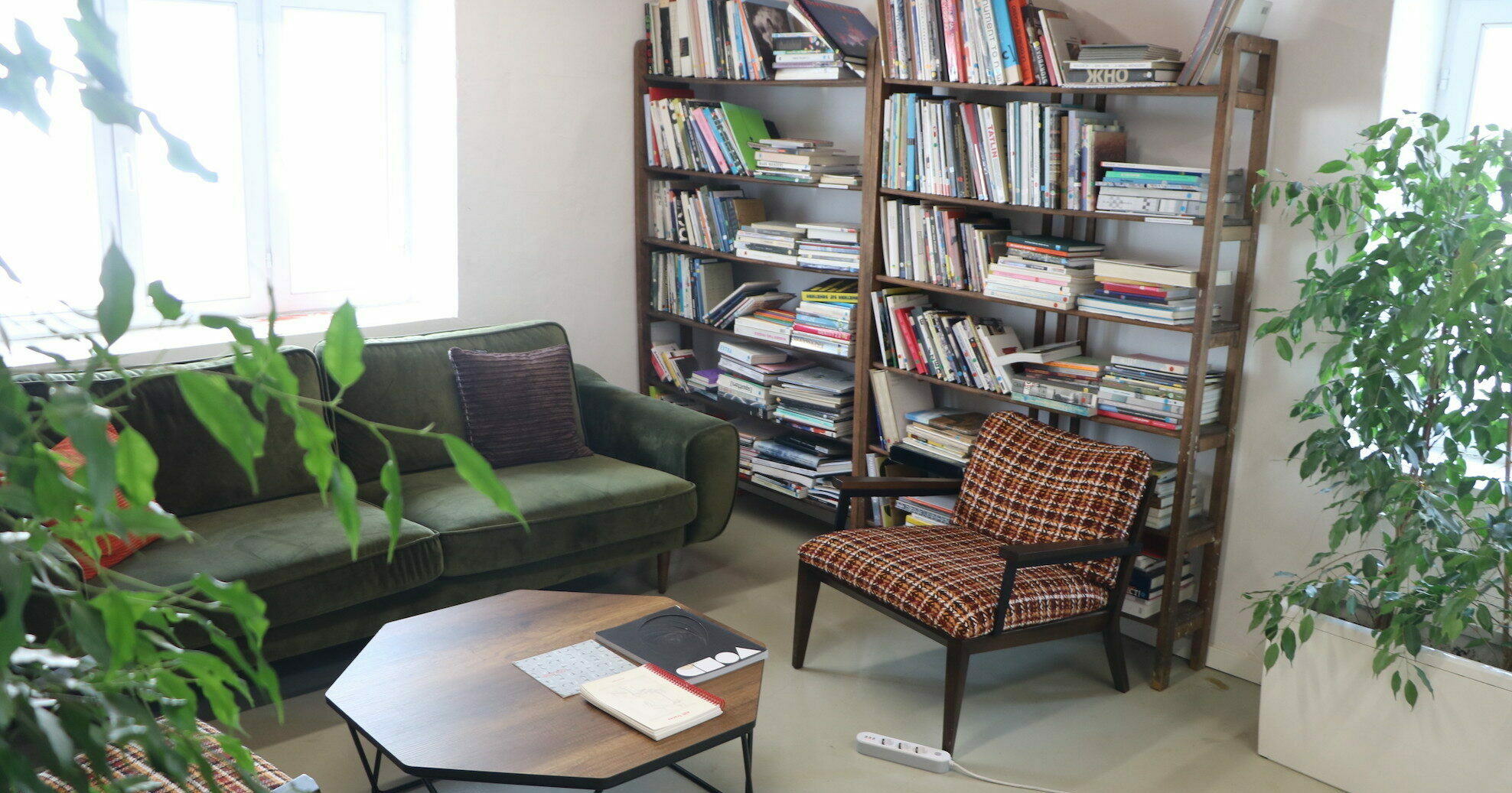
Inside the Center for narrative practice. Photo: Eddie RABEYRIN/Prishtina Insight
The CNP project was shaped by the aspirations of the local community. Rina Gosalci, Education and Community Officer at the local Manifesta association, explains, "The project aimed to be culturally relevant," and it was funded through the income generated by research, demonstrating the community's interest in multifunctional spaces. Consequently, the CNP functions as both a library and a venue equipped with workshop facilities, production tools (wood, metal, riso printer), a podcast studio, and bookable conference rooms.
Initially serving as a public workspace during a transitional period, the NPC has now commenced its concept program since May. The local team is actively organizing monthly art workshops, activities, lectures, and other engaging events within the building.
The choice of this location by Manifesta carries significant meaning. Situated near the city center, it holds an emotional connection for many residents. The library had been a cherished place for numerous individuals during their youth, attracting students and children from neighboring schools. Vjollca Tulin, who worked as a librarian in the children's section from 1980 to 2016, describes the library, saying, "It wasn't just a library." Within its walls, children engaged in painting, immersed themselves in fairy tales, and attempted to illustrate stories, creating a sensory experience through the smell of books.
Vjollca's fondest memories are intertwined with this place. Her passion for her job often kept her awake at night, contemplating the activities she could plan for the children. She proudly recalls the library's beautiful garden and flowers, claiming that no colleagues in Prishtina could match their excellence.
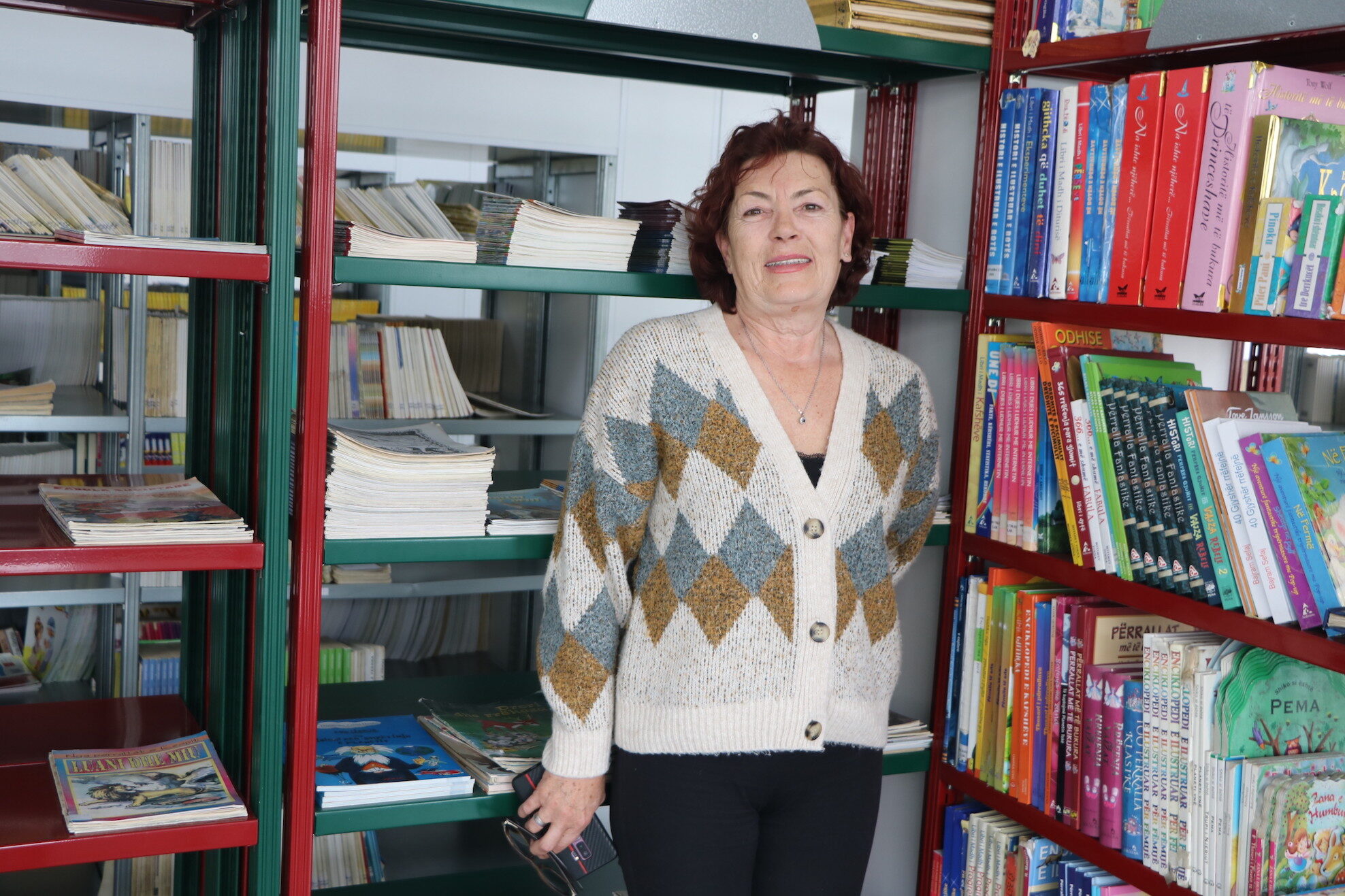
Vjollca Tulin worked between 1980 and 2016 at the former Sulejmani library. Photo: Eddie RABEYRIN/Prishtina Insight
However, the library also became a reflection of Kosovo's political landscape. While ethnic conflicts were kept at bay within its walls, the library couldn't escape the external reality. In 1994, when the Serbian director asked Vjolllca to take a professional exam in Belgrade, she declined. "I had been working for 13 years, and the first exam focused on the Serbian constitution. I refused because I wanted a constitution for Kosovo," she explains. This decision did not sit well with the director, who was her neighbor and had known her since childhood. He accused her of being a nationalist and claimed not to recognize her parents in that light.
Eventually, Vjollca had to leave the library and found employment as a technical assistant in a private company. Consequently, she missed the period when Albanian workers were fired from the library, leaving only Serbian staff behind.
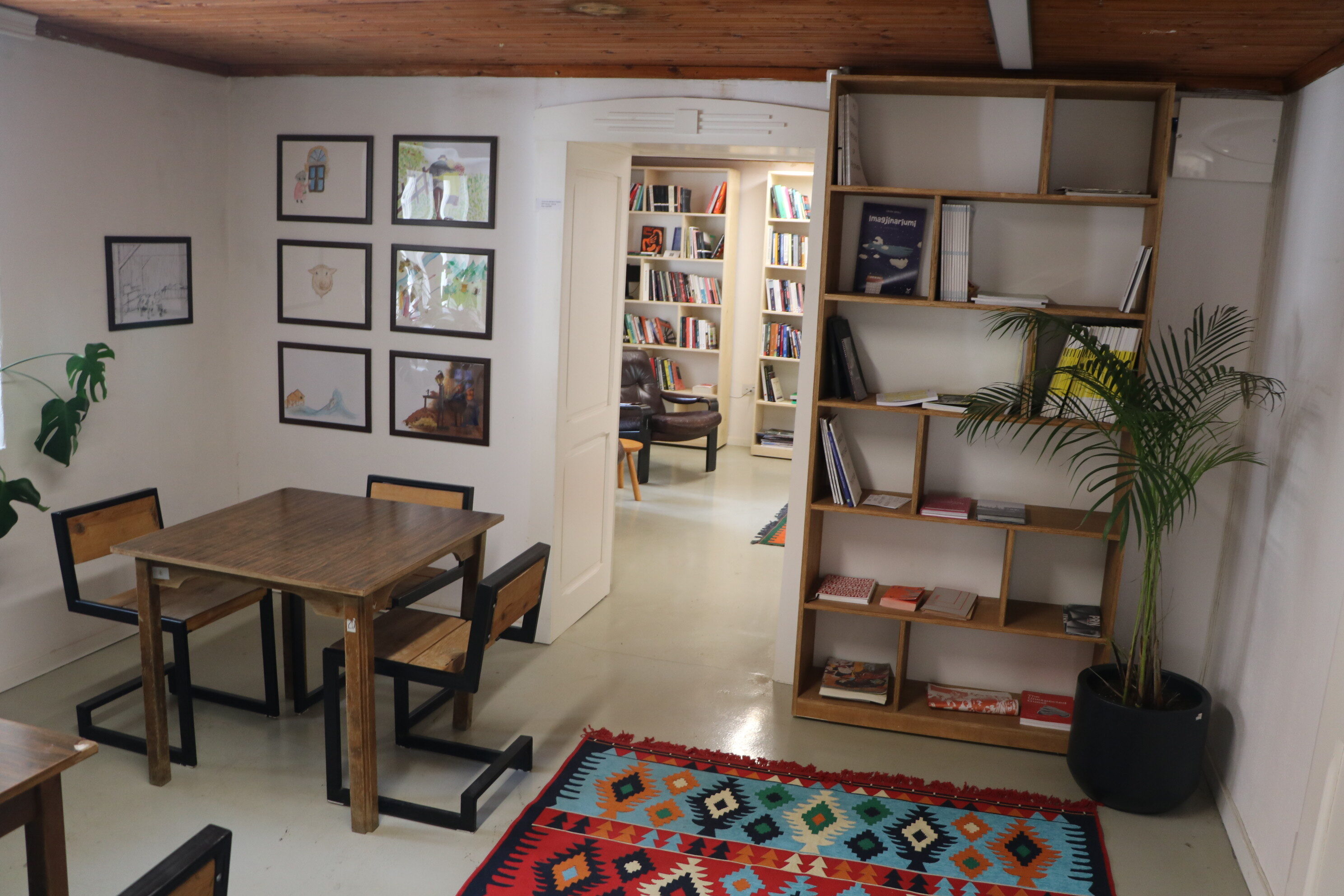
Inside the Center for narrative practice. Photo: Eddie RABEYRIN/Prishtina Insight
The NATO intervention in 1999 presented an opportunity for her to return to her beloved workplace. "The director was there and wouldn't give us the keys, so we had to break down the door. Many books in Albanian languages had been burned, and the others were strewn on the floor and shelves, covered in dirt," she recalls. It took three months of cleaning before the library reopened on June 28, this time without Serbian workers.
"When we received the first new illustrated book for the children's section, we were so happy that we danced," smiles the librarian. The library remained open until it closed in 2016, when it was moved to its current location on Sadik Bekteshi Street, a building in better condition with enough space for all activities. Vjollca is now in charge of classification. She will retire this year.
Pedestrianisation of "Kafet e Rakisë": A Vibrant Transformation
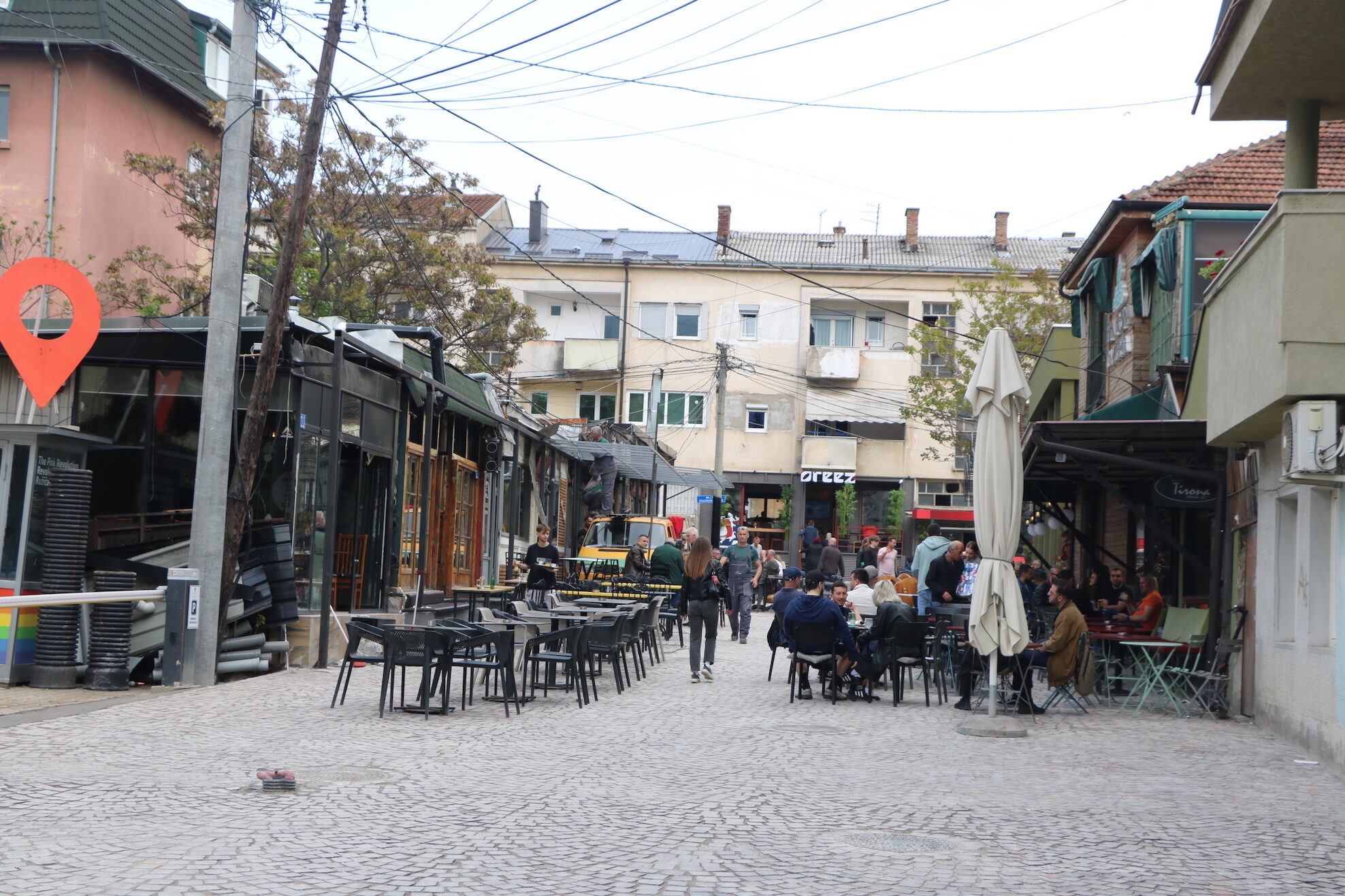
The 2 Korriku street, or as it is known, "Kafet e Rakise" street has been paved during May. Photo: Eddie RABEYRIN/Prishtina Insight
In the heart of 2 Korriku Street, the renowned "Kafet e Rakisë" or Rakia's cafés, a remarkable transformation has taken place. Just before Manifesta, Carlo Rati Associati implemented an experimental pedestrianisation project, completely prohibiting cars from entering this bustling and lively street. Furthermore, the Ministry of Culture removed nearby parking spaces, creating more room for the bars to expand their terraces, greatly enhancing the comfort for patrons. The completion of the project this month, which paved the street with traditional cobblestones ("Kalldrëmi" in Albanian), solidifies the irreversible change that has revitalized this vibrant area.
Uncertain legacies
The Green Corridor: A Path of Renewal
A notable accomplishment of Manifesta is the establishment of the "green corridor," a 1.3 km pedestrian route that connects the Youth Palace area to the brick factory and the adjacent elementary school. This unique path was developed along the former railway station tracks in northern Kosovo, which have remained dormant since the war. Although associated with the traumatic exodus of thousands of people in 1999, the corridor had fallen into disarray, cluttered with debris and overgrown vegetation, losing its appeal.
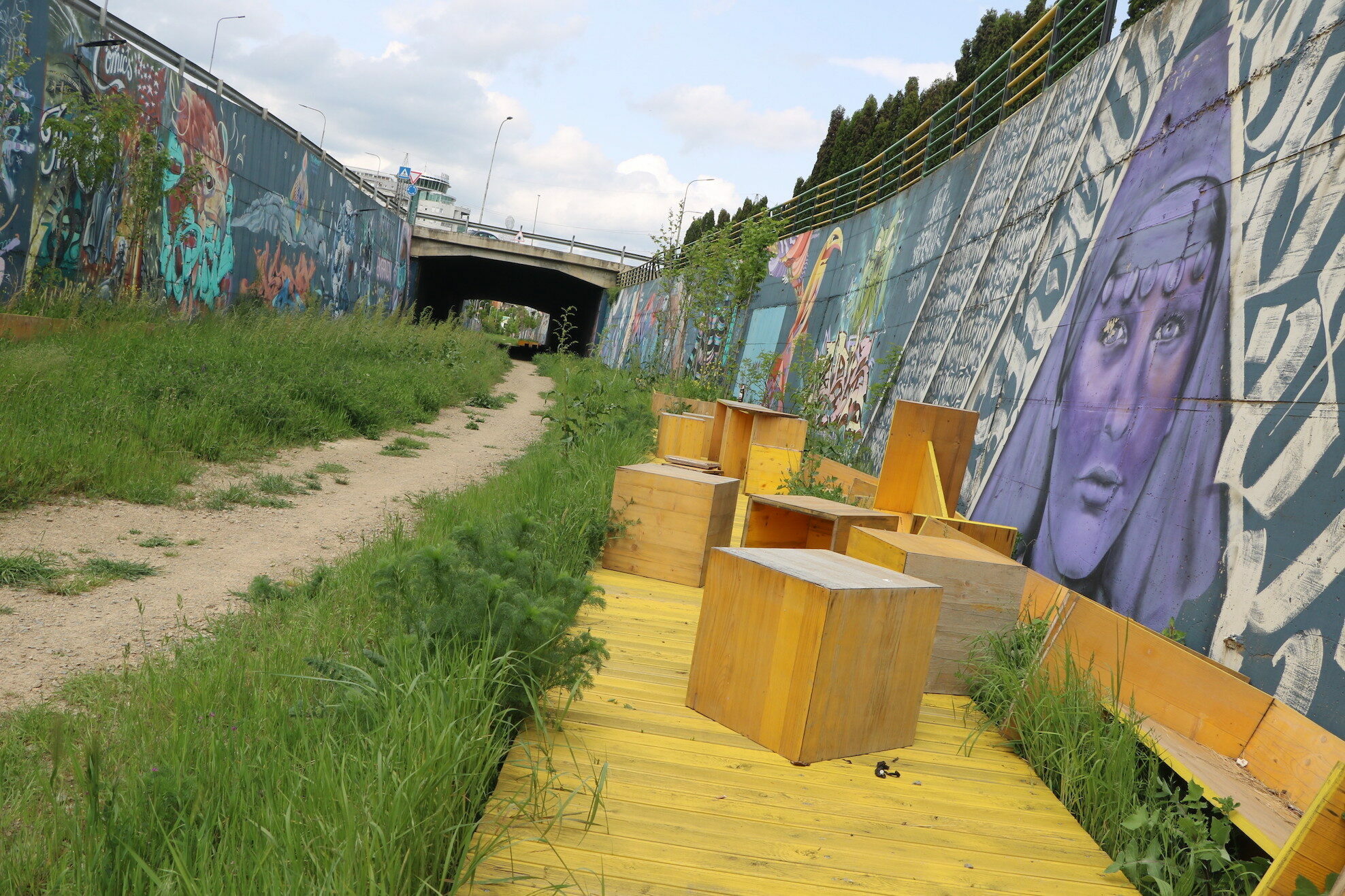
Mobile furnitures have been placed on the so-called Green corridor. They are still there but not really used anymore. Photo: Eddie RABEYRIN/Prishtina Insight
Carlo Ratti envisioned transforming this neglected land into a pleasant space for all. The organization meticulously cleared the area, partially covering the tracks, and introduced movable furniture such as tables and benches, alongside potted trees. The primary aim was to establish a connection between the various districts in the west and the city center, offering people an attractive alternative route that veered away from the neighboring streets overwhelmed by vehicular traffic. Simultaneously, it sought to improve the living environment for nearby low-income families, bringing a sense of rejuvenation and revitalization to their surroundings.
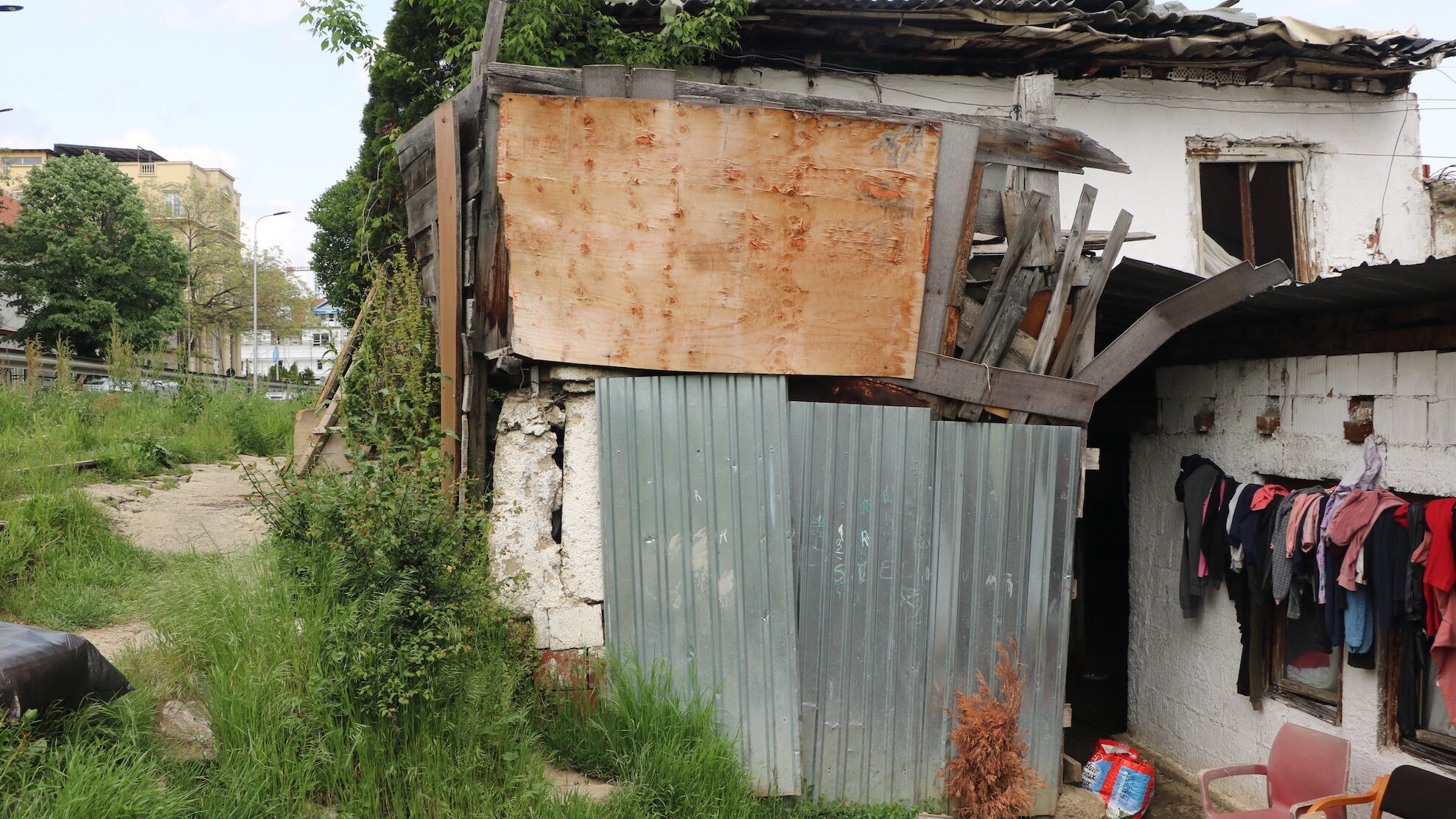
Some poor families live near the former rail tracks. Photo: Eddie RABEYRIN/Prishtina Insight.
Two weeks prior to initiating the project, the association sought the consultation of local residents through UN-Habitat. A series of workshops were conducted to address their concerns, with Modest Gashi, Spatial and Urban Planner Advisor at UN-Habitat Kosovo, highlighting the issues raised: "People expressed a lack of safety when walking in the area or allowing their children to go to school alone. They also voiced grievances about overgrown bushes that remained uncleared, leading to snakes entering their houses."
Now that the festival has concluded, the responsibility for managing the area lies with the municipality. Presently, the green corridor does not quite live up to its name, as the railway tracks are overrun with weeds. The municipality's waste services are still in the process of cleaning up the area. Perparim Rama, the mayor of Prishtina, laments the inadequate monitoring of the area by the police and the unfortunate damage caused to the structures built during Manifesta, despite efforts to deter vehicles with trucks.
To attract more visitors, additional investments may be required. One such plan proposed by the municipality is to revive the idea of constructing a pedestrian bridge between the Hotel Grand and the Palace of Youth. Rama states, "This project dates back to the 1970s, and we are determined to implement it. It will connect Arberia to the Youth Palace, the Youth Palace to Grandi, and Grandi to Mother Teresa Square, creating a new pedestrian structure."
Nevertheless, uncertainty persists regarding the future of the area, as it is still owned by Infrakos, the national company responsible for managing rail infrastructures. As part of the Brussels agreement to reintroduce trains in Kosovo, there is a possibility that the rail tracks may be utilized again someday, potentially jeopardizing the future of the Green corridor.
The Brick Factory
Founded in 1947, this factory was a prominent supplier of building materials to the town, to the extent that all the red buildings in the area were constructed with its bricks. It also served as a significant source of employment. However, as building practices shifted from brick to concrete in Prishtina, the factory eventually ceased operations. Over the next two decades, the land was repurposed for a recycling company while the building itself fell into disrepair.
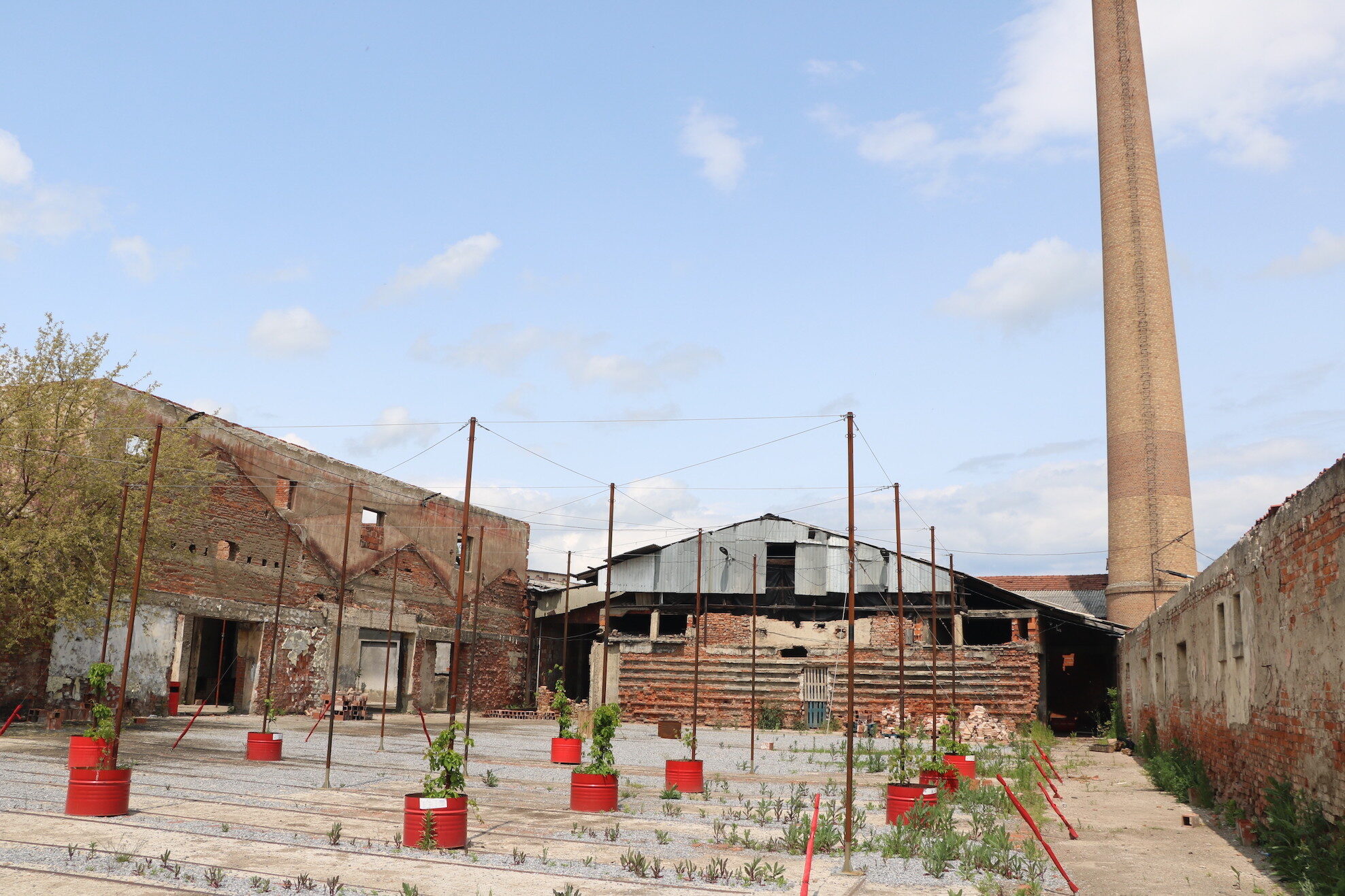
Recent progress at the former Brick Factory. Photo: Eddie RABEYRIN/Prishtina Insight
Since 2007, the administration of the Kosovo Privatisation Agency has owned the old factory. In preparation for Manifesta, the municipality purchased the entire area in 2021, evicting informal businesses and engaging companies to clean up the site. Subsequently, Raumlabor, a collective of German architects, was enlisted to envision a potential future for the location.
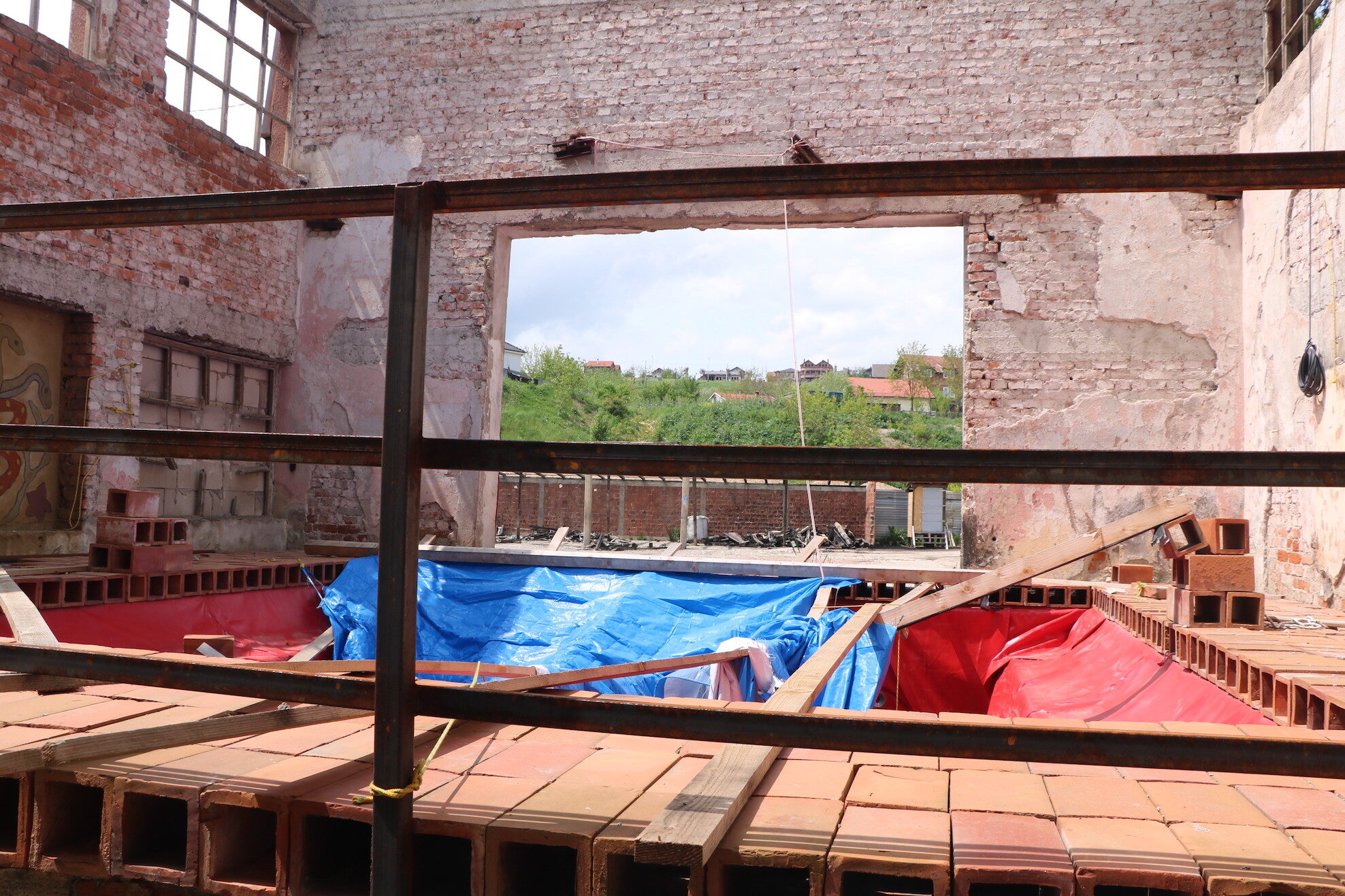
Recent progress at the former Brick Factory. Photo: Eddie RABEYRIN/Prishtina Insight
During this 100-day experiment, they transformed the factory into a cultural hub. With the assistance of around 40 international students, they utilized bricks to construct a kitchen, bar, auditorium, and even a swimming pool, hosting various events.
Now that the festival has concluded, the site appears relatively quiet. While the municipality purportedly has plans to sustain the area, it has yet to respond to inquiries from Prishtina Insight regarding these plans. Nevertheless, the entrance to the former industrial site remains guarded, and the structures built by Raumlabor are still intact. Recent activity has been observed in the external space.
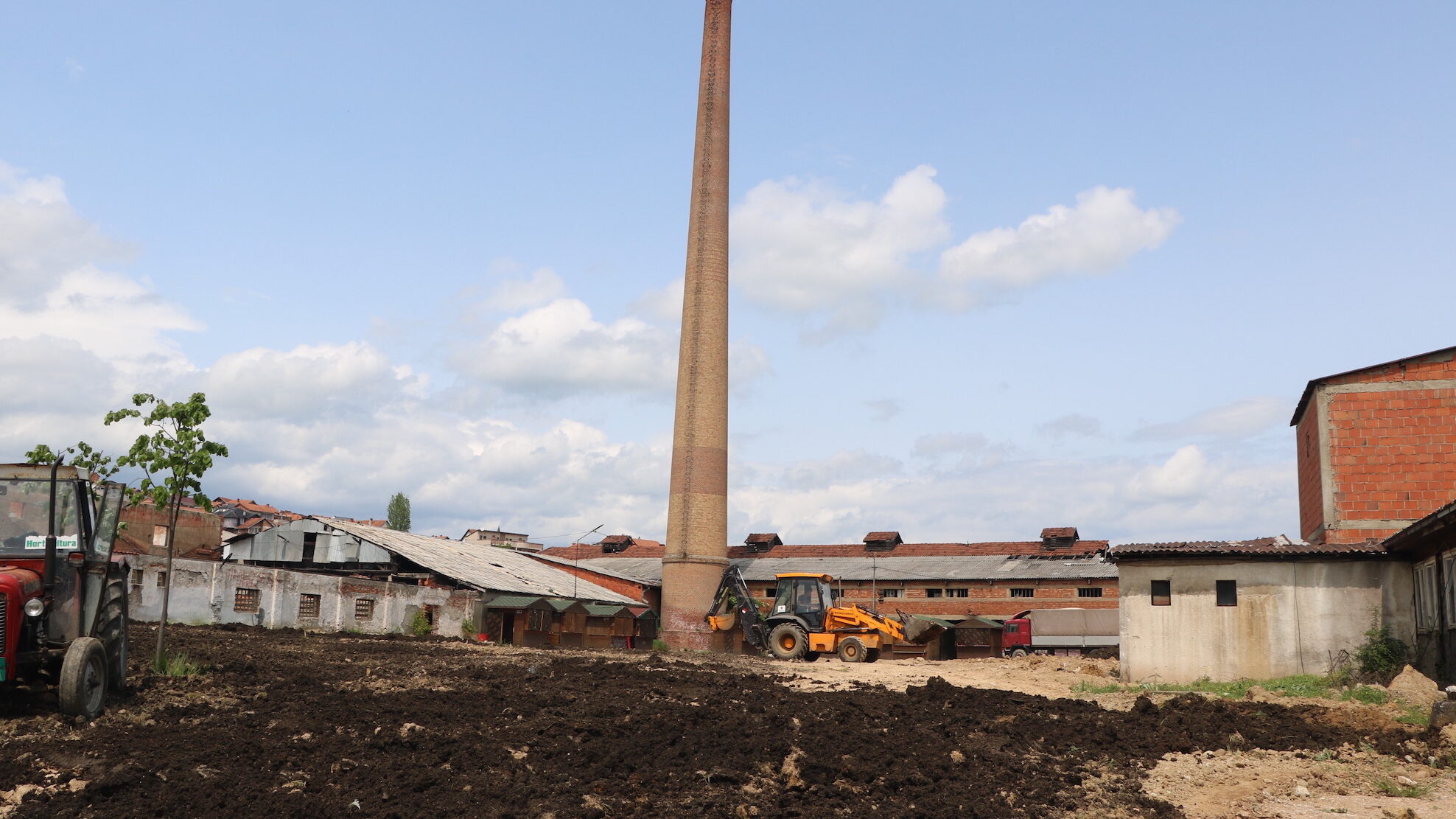
Recent progress at the former Brick Factory. Photo: Eddie RABEYRIN/Prishtina Insight
The Grand Hotel

Grand Hotel Prishtina. Photo courtesy of Manifesta. Author: Atdhe Mulla.
During Manifesta, the Grand Hotel served as the focal point of the festival, hosting numerous events. Many locals took advantage of the festival to explore this iconic city landmark, which holds a wealth of stories.
As an international organization, Manifesta acted as an intermediary in shaping people's perception of public space. Ismail Myrseli, former mediator for Manifesta in Prishtina, highlights the transformative nature of the event, stating, "The Grand Hotel bears the traces of trauma, and when an institution without local roots steps in, they are permitted to reinterpret these spaces." He adds, "If I were to alter Tito's room, I would be considered public enemy number one, but when Manifesta does it, it's not the same."
However, Manifesta's presence was temporary, and it is unlikely that the Grand Hotel will be reclaimed as a public space in the near future. Unlike the Hivzi Sulejmani Library or the Brick Factory, which were acquired by the municipality prior to Manifesta, the primary challenge lies in the ownership of the Grand Hotel. The building was privatized and remains embroiled in a legal dispute involving multiple parties.
Eddie RABEYRIN is an intern journalist at Prishtina Insight. After working for several years in the French local press, he resumed studies to do a Master’s degree in international relations at the University of Strasbourg, France.





